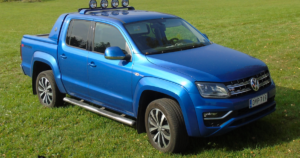You may have noticed that it’s gradually been getting colder over the past couple of weeks and it looks as though this is set to continue. With temperatures dropping, there is likely to be quite a change in the weather and it may even be cold enough to get the sledges out as snow is on the horizon. Despite the numerous amount of weather warnings, motorists are still getting caught out when snow and ice hit our roads so it’s worth knowing how to prepare yourself with our top tips.
Before heading out in snowy or icy conditions, here’s everything you need to know:
1. Don’t drive unless you have to
Before leaving to go anywhere in your car in the snow or ice, the first thing you should ask yourself is whether or not it’s necessary for you to travel. Driving on the snow and ice isn’t something you should do unless you really have to. If you do find yourself out and about on the road and it’s been snowing or it’s icy, you may be at risk of skidding and this can be quite intimidating for some drivers. Even if you feel like you’re a confident driver when you’re on the road, you may not feel as confident when it comes to ice skating on them as you could potentially be at risk of having an accident.
2, Plan your route
Before you set off on your journey you should ensure that you plan your route. Try to keep up to date with the latest local weather and any traffic updates to help make your journey as smooth as possible. In doing this, your journey should be less stressful if you know exactly how to get to your destination and you can help to avoid getting yourself stuck in roadworks and congestion. It’s always a good idea to plan an alternative route too as this will help you out if there’s a problem with your original route.
3. Pack for the worst
When you’re on the road you want to ensure that you’re prepared for the possibility that something could go wrong. To do this you should prepare a winter breakdown kit, which could be equipped with the following; a demisting pad, torch, a blanket, jump-start cables, an ice scraper, a phone charger, a screenwash and some snacks. If your car breaks down during the winter this can have much more serious complications than any other time of the year, so it’s a good idea to keep these essentials in your car just in case you experience a mechanical problem.
4. Visibility
Before you even think about starting your engine, it’s important to make sure that all you’re windows and windscreens are free of ice, snow and condensation before you set off. Visibility when driving is extremely important and it’s not good enough to just scrap a small hole in your windscreen so that you can peep out of it. Too much ice and heavy snow will reduce your visibility so do try to ensure that you are always equipped with a de-icer and a screen scraper and watch out for gritters and snowploughs. Also, don’t forget to check that your wipers are in good condition and replace these if necessary.
5. Tyres
Check that your tyres are in good condition as you need to ensure you’re getting a grip of the road and this is even more important in wet or icy conditions. Remember that the only contact with the road surface is your tyres so it’s crucially important that your tyres meet the minimum legal limit, which is 1.6mm. However, at least 3mm of the tread is recommended for winter driving. You should also check that your tyres are inflated to the correct tyre pressure and don’t think about reducing the pressure to get more grip as this will not work and reduces stability. It’s also a good idea to think about changing to winter tyres as these will allow you to get a better grip in the cold and wet conditions.
6. Light up your life
Always check and use your lights. In the winter you’ll be more than likely using your lights a lot more so it’s important to ensure that these are all in working condition. It’s not always obvious if one of your lights is not working as it should so it’s worth checking. If you’re looking to check that your brake and reversing lights are working, then you can always check these by looking at the reflection in a window or another car’s windscreen.



















































